Included in this Just Listed! update are properties representing over three centuries of Pennsylvania history.
Properties range from Muhammad Ali’s mountain boxing retreat to a masterpiece of modern architecture to a historic district rich in the building traditions of the Pennsylvania Dutch. Read below to learn more about the Commonwealth’s newest additions to the National Register of Historic Places.
Schaefferstown Historic District
Heidelberg Township, Lebanon County
LISTED, 11/03/2023
PA-SHARE Resource #1979RE00356
Eligible under Criteria A (events) and C (architecture), the historic district consists of almost 200 buildings in the heart of Schaefferstown. The area was originally settled by German immigrants in the 18th century, and this history is reflected in the town’s architecture.
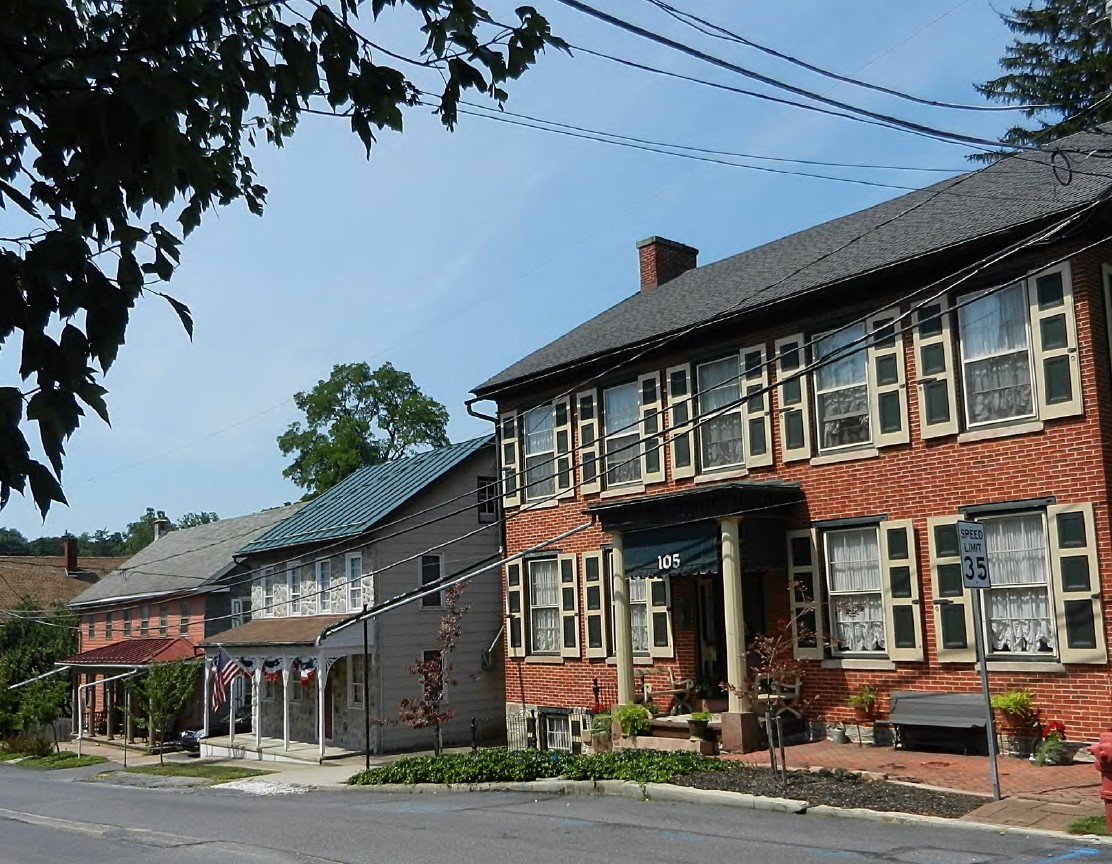
Buildings line a Schaefferstown street in Lebanon County.
Within the district are examples of building forms associated with the Pennsylvania Dutch, including German Continental Houses (flürkuchen) and the Four Over Four House (sometimes called the Pennsylvania German Double Door Farmhouse). The district is also home to three c. 1750 tavern buildings. You can stop in and have a meal at the Franklin House, which still operates as a restaurant and tavern today.
Fairelawn
30 Pelham Road, Philadelphia
LISTED, 9/5/2023
PA-SHARE Resource #2022RE00366
This home, constructed in 1902-1903, is an excellent example of the Tudor Revival architectural style and was listed on the National Register of Historic Places under Criterion C (architecture). Industrialist Henry B. Curran and his wife Lillie Curran commissioned the home as a wedding gift for their daughter, Constance Davison. She lived at the property along with her husband, attorney William M. Davison Jr., their two children, and four live-in servants.
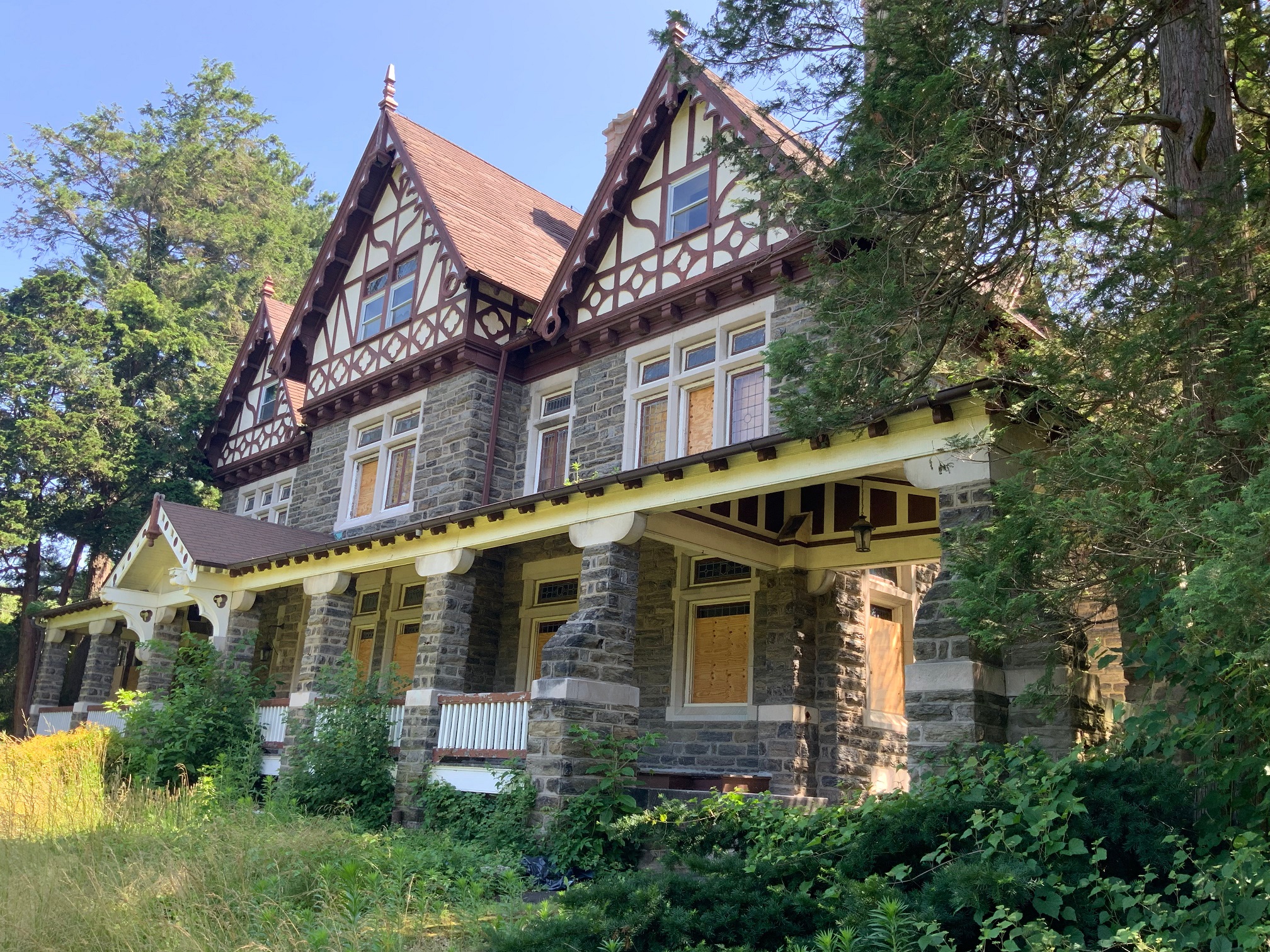
Fairelawn in Philadelphia’s Pelham subdivision.
The house is within the Pelham subdivision developed by Herman Wendell and Willard Bassett Smith, who marketed the area to affluent families looking for “a bit of the country set down in the city.” Architects and brothers George W. and William D. Hewitt designed the elaborate, upscale residence. The elder George Hewitt had previously partnered with prominent architects like John Fraser and Frank Furness before going into business with his younger brother.
Today, Fairelawn maintains a high level of craftmanship and rich architectural details, fulfilling the vision of developers Wendell & Smith to construct homes “built to last, and built to be lovely.”
First Baptist Church of Germantown
38 E. Price Street, Philadelphia
LISTED, 8/21/2023
PA-SHARE Resource #2002RE00062
The historic First Baptist Church of Germantown was listed on the National Register of Historic Places due to its architectural significance (Criterion C) and importance to social and ethnic history (Criterion A). The well-known Philadelphia architect Samuel Sloan designed the church in 1852 in the popular Greek Revival architectural style. The same year, Sloan published his first architectural pattern book, The Model Architect. The bestselling guide featured the First Baptist Church as a model church design in its second volume.
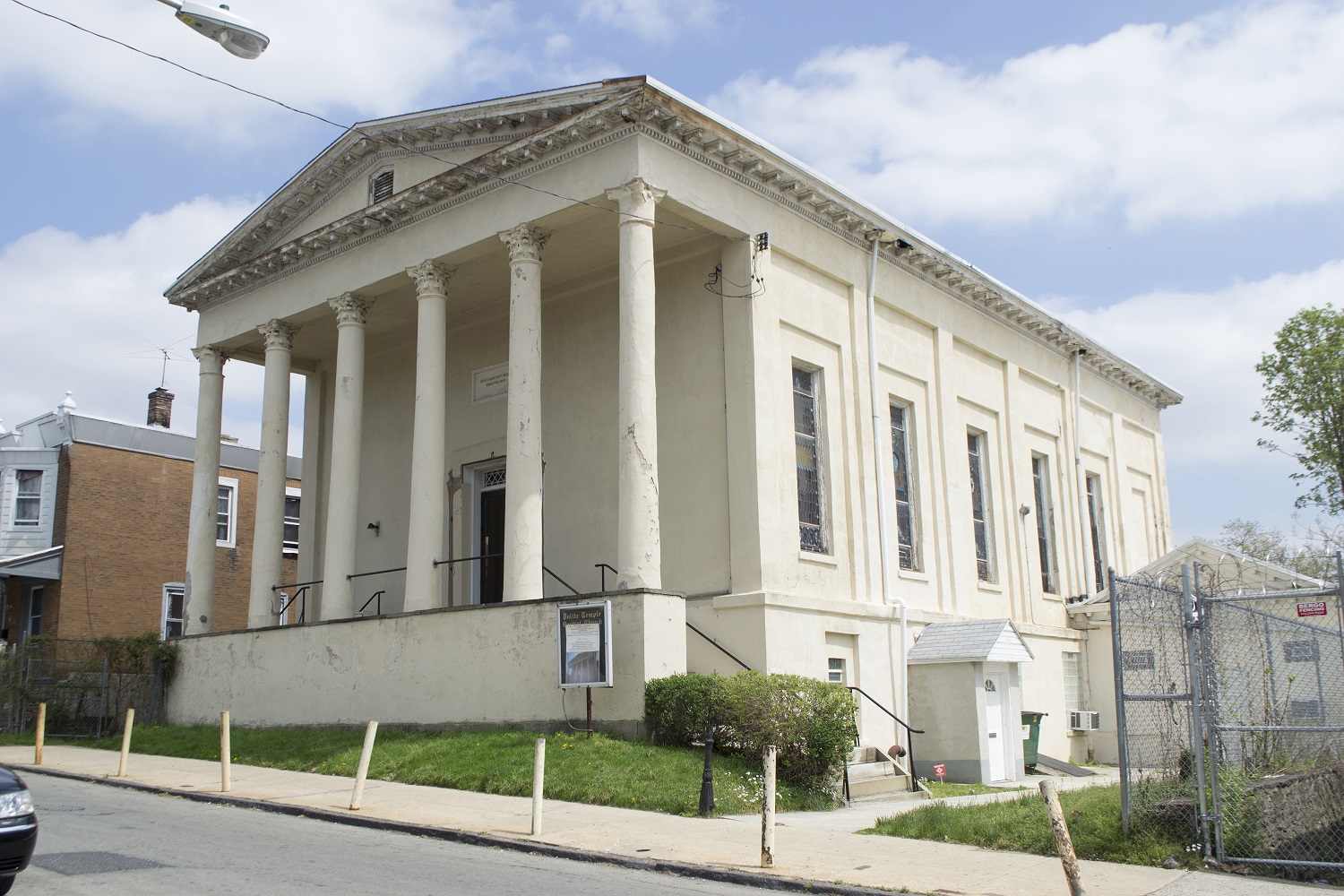
The First Baptist Church of Germantown, Philadelphia.
In the 20th century, Germantown underwent a substantial demographic change. Black southerners moving into the area during the Great Migration coupled with white flight led to the community becoming 80 percent Black by 1980. In the midst of this transformation, a Black Baptist congregation led by the Reverend Collin N. Polite purchased the First Baptist Church in 1955. The Polite Temple congregation continues to worship in the building to this day.
Penn Asylum for Indigent Widows and Single Women
1401 E. Susquehanna Avenue, Philadelphia
LISTED, 6/29/2023
PA-SHARE Resource #2022RE00122
This 19th-century philanthropic institution was listed on the National Register due to its significance to social history (Criterion A). Four women–Elizabeth Van Dusen, Margaret Creamer, Elizabeth Keen, and Ann Lee–founded the asylum in 1848, and the organization formally incorporated in 1852.
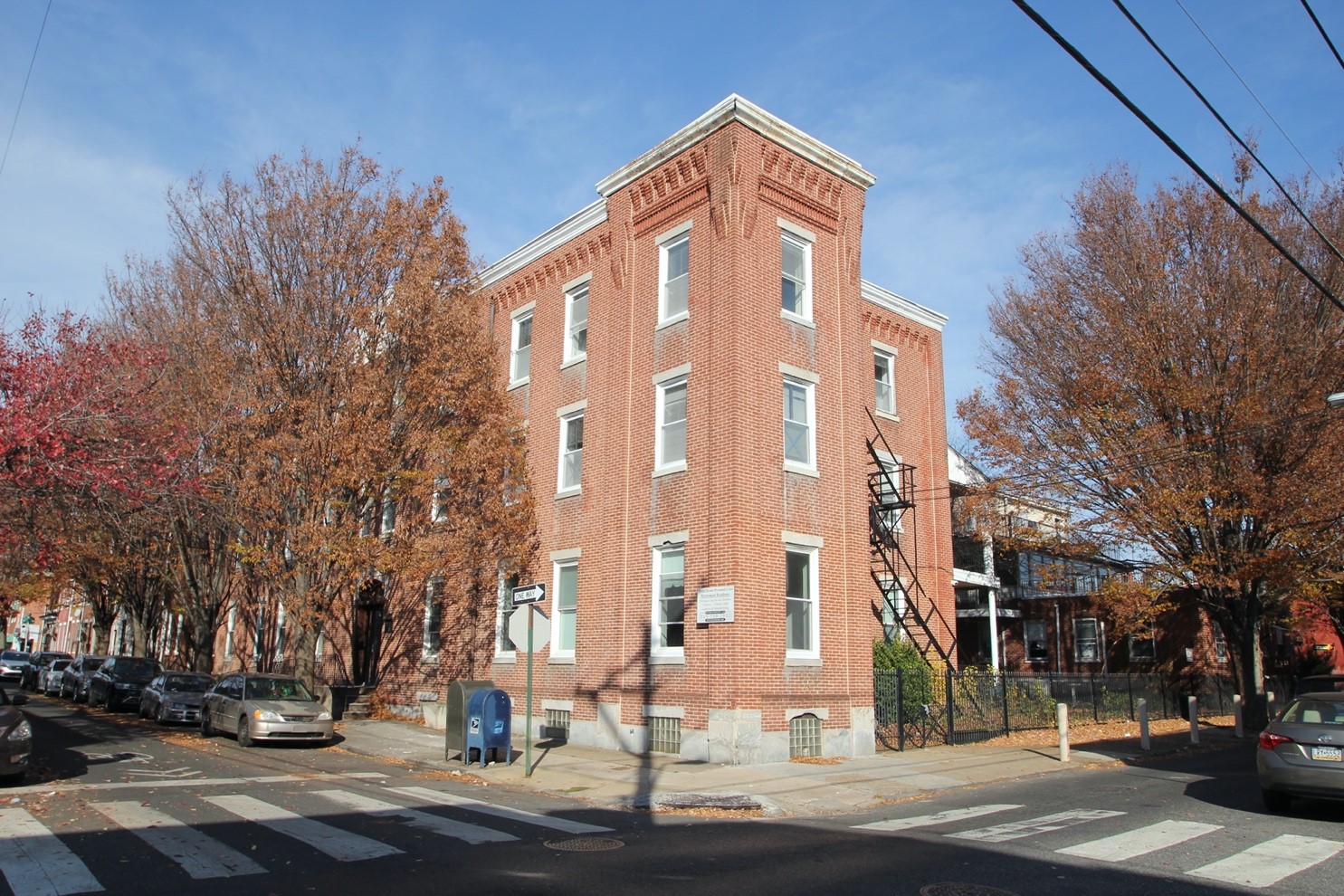
The former Penn Asylum for Indigent Widows and Single Women in Philadelphia’s Fishtown neighborhood.
The entirely woman-run institution provided a safety net for its elderly residents, “who through death or other misfortunes have been left unprovided.” In exchange for a modest fee, women housed at the asylum received room, board, clothing, and medical care. The charity operated solely on donations and quickly outgrew its original location in a private residence, leading to the purchase of the structures on East Susquehanna Avenue in 1858.
The organization continued to serve elderly women in the Fishtown neighborhood for a century and a half, and in 1991 it welcomed its first male resident. Currently, there are plans to rehabilitate the complex.
Margaret Esherick House
204 Sunrise Lane, Philadelphia
LISTED, 8/21/2023
PA-SHARE Resource #2022RE09975
The internationally renowned architect Louis I. Kahn designed this 1962 residence, which is listed on the National Register of Historic Places under Criterion C (architecture). Margaret Esherick commissioned the building to house her and her large collection of books.
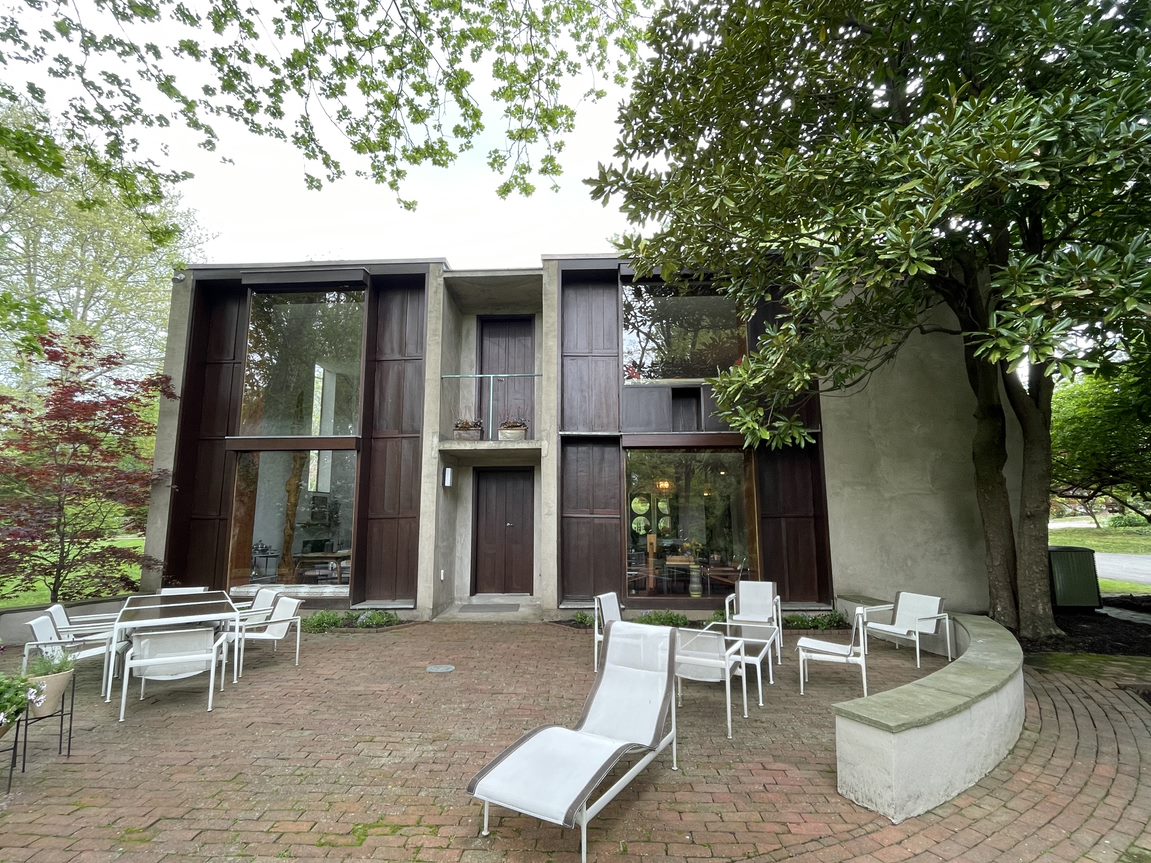
Kahn’s residential Modern home in Chestnut Hill.
Architectural historians consider the property–a rare example of Kahn’s residential work–to be one of the most important modernist houses in the United States. Kahn’s design centered on making use of natural light to impact how people experienced the building’s interior spaces at different times of day and seasons. Margaret Esherick’s uncle and Kahn’s close friend, sculptor Wharton Esherick, built the kitchen.
Eager to experience her new home, Esherick moved into the property before construction was finished. Sadly, she passed away a few months later. Since her death, the property has been sold only three times, and its owners have maintained the integrity of the building’s remarkable design.
Fighter’s Heaven
58 Sculps Hill Road, Orwigsburg, Schuylkill County
LISTED, 8/21/2023
PA-SHARE Resource #2019RE14023
This historic camp is eligible to the National Register of Historic Places under Criterion B (people) for its association with boxing legend Muhammad Ali. An American icon and recipient of the Presidential Medal of Freedom, Ali was a three-time heavyweight champion of the world and Olympic athlete. He was also known for his commitment as an activist and philanthropist.
Ali originally came to Schuylkill County to train at Bernie Pollack’s Mink Farm. Sold on the area’s peaceful and secluded setting, Ali purchased six acres to call his own in 1972. Over the years, his “Fighter’s Heaven” grew to encompass seventeen rustic structures, including a mosque, log gym, bunkhouses, cabins, and more.
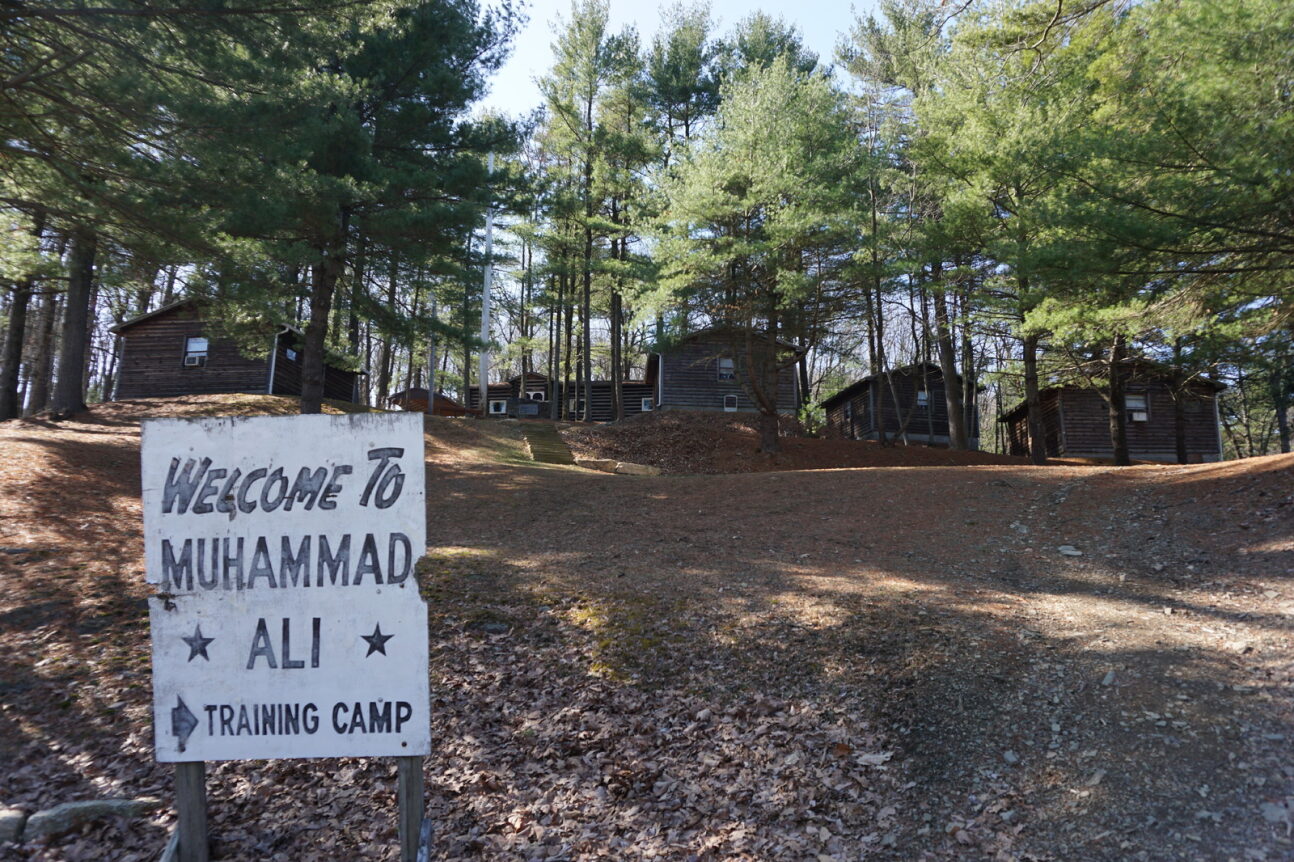
Entrance sign to Fighter’s Heaven in Schuylkill County.
Ali lived and trained at Fighter’s Heaven before many of his career-defining matches, including his 1974 victory over George Foreman in the “Rumble in the Jungle” and his win over Joe Frazier in the 1975 “Thrilla in Manila.” Ali said, “If there’s any secret about my fights, it’s how I prepare myself…I’m up in the hills training at the best fighter’s camp in heavyweight history, and I am more at home up here with my log cabins than I am in my house in Cherry Hill.”
Comment Policy
PHMC welcomes and encourages topic-related comments on this blog. PHMC reserves the right to remove comments that in PHMC’s discretion do not follow participation guidelines.
Commenters and Comments shall be related to the blog post topic and respectful of others who use this site.
Commenters and Comments shall not: use language that is offensive, inflammatory or provocative (this includes, but is not limited to, using profanity, obscene, or vulgar comments); disparage other commenters or people; condone illegal activity; identify the location of known or suspected archeological sites; post personal information in comments such as addresses, phone numbers, e-mail addresses or other contact details, which may relate to you or other individuals; impersonate or falsely claim to represent a person or an organization; make any commercial endorsement or promotion of any product, service or publication.
If you would like to comment on other topics not related to this blog post but related to PHMC, please fill out the PHMC Contact Us Form.
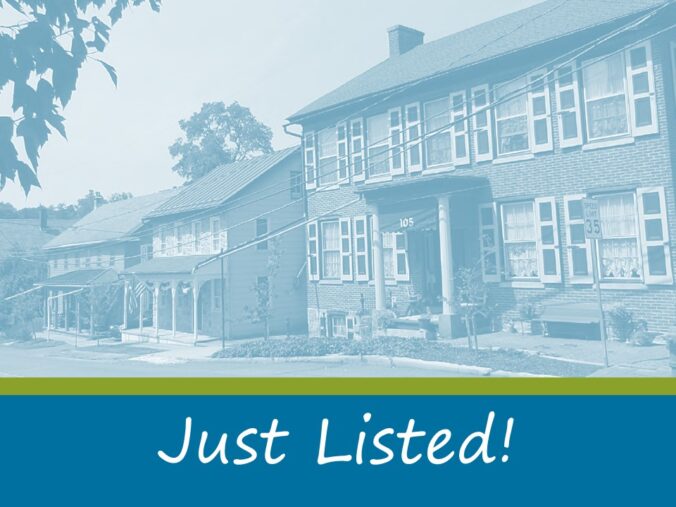
Leave a Reply